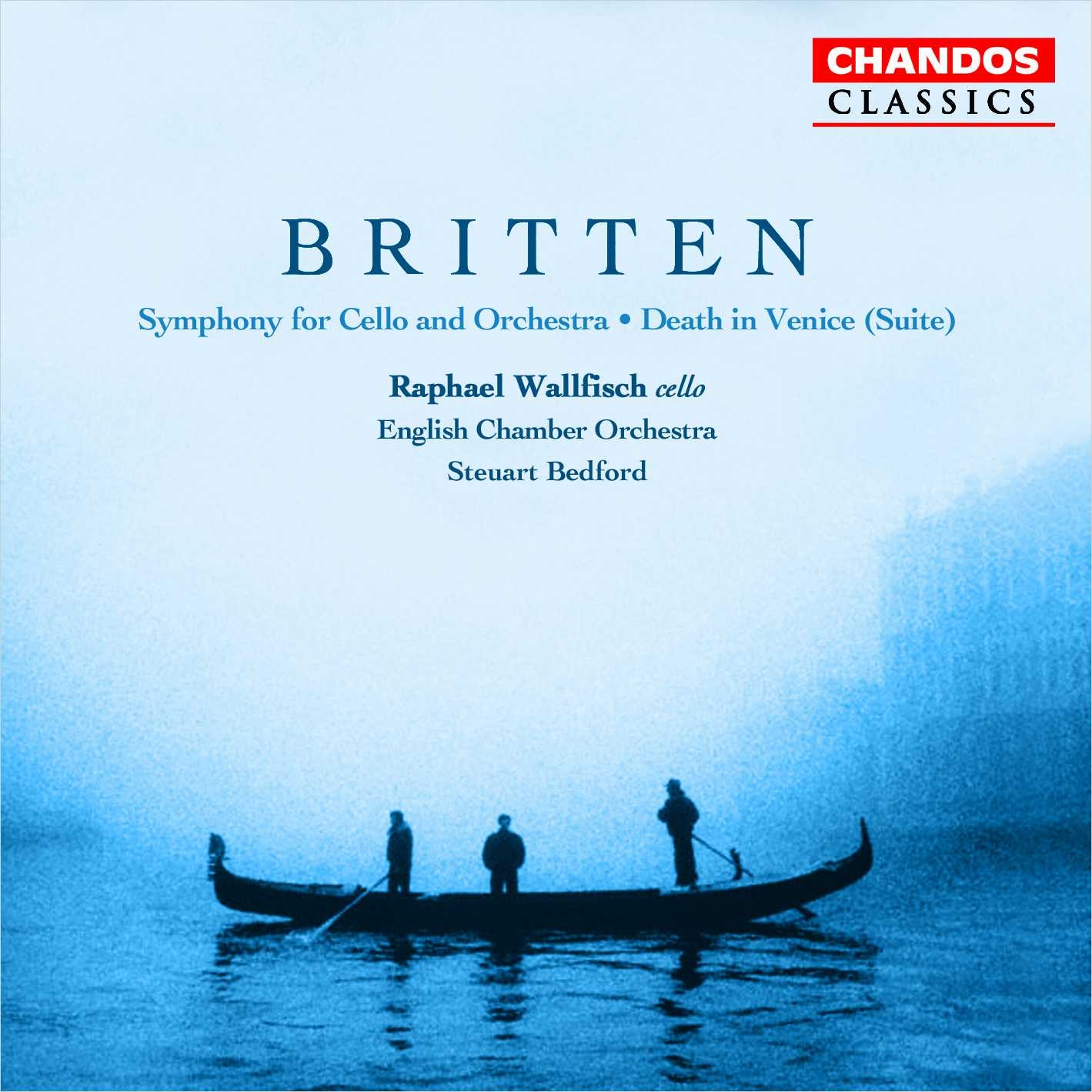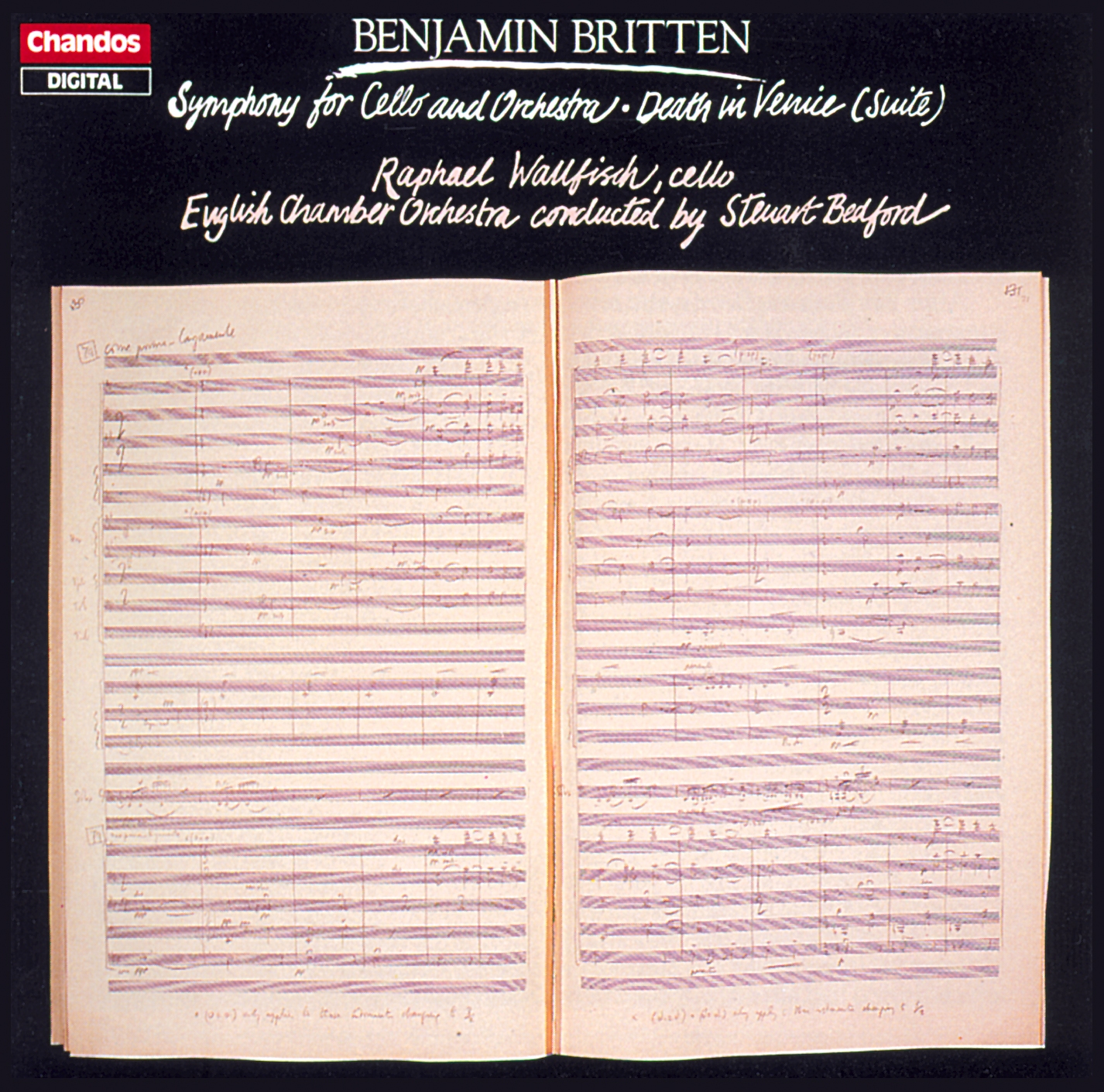Often a composer / performer 'owns' a piece of music, thus keeping others away from it.
Such was the case with Britten's Symphony for Cello, written for Soviet cellist Mstislav Rostropovich in the 60s. I believe the cellist recorded it a few times, once with Britten himself at the podium, and at least one other with Rozhdestvensky conducting shortly afterwards.
If I am doing my math correctly, it took until this 1984 recording with British cellist Raphael Wallfisch to open the floodgates on the work, where at least another dozen recordings have followed in its wake.
Of course, having Steuart Bedford on hand is a boon, for he was Britten's assistant, and conducted many premieres of the composer's music. Rostropovich is well known as an intense, no-holds barred cellist, and I doubt many will go back to his singular method of attack in the symphony, but there are many way to approach a piece of music. Bedford and Wallfisch make as much of it as they can, perhaps more lyrical, more forward-moving, but nobody wants to be a copycat.
The music of Britten's Cello Symphony is rather severe; enough to make its music difficult to grasp. The opening movement is the most oppressive, whereas the second-movement Presto offers little relief other than in its manic tempo and contrasting orchestral colors. The third movement is made up of a large solo cadenza, transitioning from the heavy atmosphere and bombastic timpani to the light of the final movement, heralded by solo trumpet.
Indeed, if not for the last movement, the journey really wouldn't be complete, although some find the change just too much. Not only is the finale in a sunny major key, but Britten looks to the Baroque for the conclusion, offering a completely different mood and style.
Altogether, the Cello Symphony is not especially easy music from Britten, so if this is a first listen, be prepared to give the work some time and possibly different approaches to its music.
Steuart Bedford also premiered Britten's opera Death in Venice in the 70s, a stage work containing a plot revolving around a character's trip to Venice during a cholera outbreak. Bedford created a concert suite from the opera score around the time of this recording, at the behest of Peter Pears, one which hasn't seen many oft-repeated performances or recordings.
At least in comparison to the Cello Symphony, the orchestration is much more colorful, with a particularly large battery of pitched percussion. I don't think anyone would call Death in Venice light material, but hearing the music back to back, it sounds much more exotic and bright, yet with plenty of astringent melancholy and unease.
Bedford leads the English Chamber Orchestra, another link to the Britten Era, for the composer often used the ensemble for his recordings. The sonics are well judged, later remastered in 2004, and I think the programming on hand is an interesting one.
Works
Symphony for Cello, op. 68 (34.04)
Death in Venice: Suite, op. 88 (26.55)
Soloists
Raphael Wallfisch, cello
Performers
English Chamber Orchestra
Steuart Bedford, conductor
Label: Chandos
Year: 1984; 2004
Total Timing: 61.05
The Cello Symphony is one which could take quite a while to figure out and become comfortable with, although I don't think comfort was in Britten's mind.
But it took this recording to bring others to perform and record its music, so this remains an important performance.
Having a concert suite from Death in Venice from the conductor who premiered the work is an interesting combination.



No comments:
Post a Comment